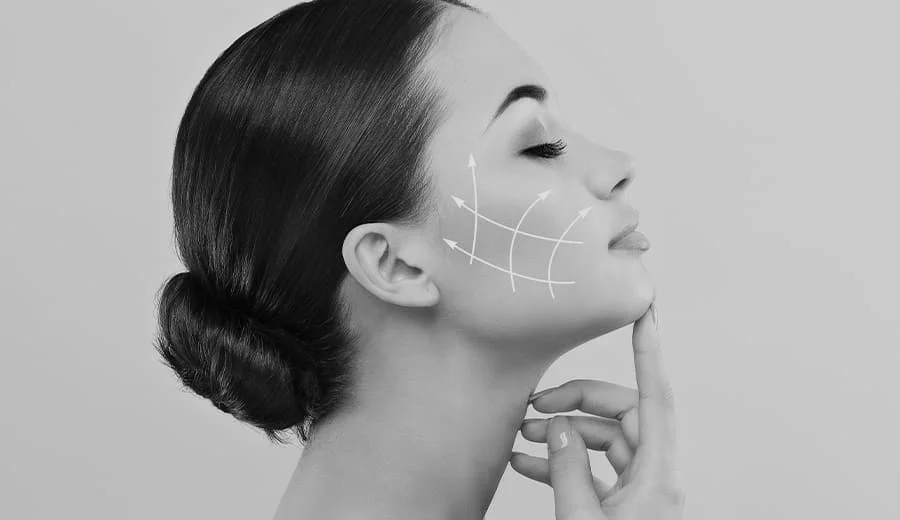October 21st, 2024
Dr. Mulholland, Md
Does Blepharoplasty Leave Scars?
Yes, blepharoplasty can leave scars, but they are usually minimal and well hidden within the natural creases of your eyelids. With proper care and expert surgical techniques, noticeable scarring can be significantly reduced. Choosing a skilled surgeon and following post-operative care instructions are key to achieving the best results.
What is Blepharoplasty?
Blepharoplasty, commonly referred to as eyelid surgery, is an effective way to lift your eyes and deepen their crease, making them look more animated and youthful. The eyes are one of the first areas to show signs of aging with sagging eyelids, puffiness, and under-eye circles. Rejuvenate tired eyes and aging concerns with eyelid surgery.
Blepharoplasty takes 1-2 hours and can be performed on the upper or lower eyelids. You will experience some swelling and redness after your procedure, but this will subside in a week. Sleep with your head elevated and apply cold compresses to reduce swelling. Sutures will be removed a week after your procedure, but if you want to know how to minimize and treat blepharoplasty scars, keep reading!
How To Minimize Scars After Eyelid Surgery
When people choose to get eyelid surgery, there is a common concern about scarring after the procedure. Having a skilled cosmetic surgeon, following aftercare instructions, and reading the tips below will help you prevent scarring and heal quickly.
Surgical Technique
The skill and technique of your cosmetic surgeon are crucial in minimizing scarring. A board-certified plastic surgeon like Toronto Plastic Surgeons ensures that incisions are made along the natural creases of the eyelids or inside the eyelid for lower blepharoplasty, reducing visible scars. The use of precise and advanced surgical techniques significantly contributes to minimal scarring.
Don’t Touch Your Eyes
Although this tip is obvious, it’s not always easy to follow. Avoid rubbing or touching your eyes at all times for the first week following your blepharoplasty since putting pressure on your eyelids can reopen incisions and introduce bacteria into the sutures, leading to infection. Practice not touching your eyes for days at a time before your eyelid surgery to prepare.
Follow Aftercare Instructions
Toronto Plastic Surgeons and his esteemed team of nurses and surgeons will advise you on how to care for your sutures and heal quickly. Follow all instructions and recommendations they provide, such as applying a cold compress to the treated area, keeping your head elevated, and cleaning your incisions with a sterile pad to avoid infection.
Protect your Skin from UV Rays
You should always incorporate sunscreen into your daily skincare routine, but it is especially important after your eyelid surgery. Following your blepharoplasty, the sun’s UV rays can damage your scars further during the healing process and cause discolouration. Apply sunscreen to healed scars before going outdoors, and for eye safety use a physical sun blocker like zinc oxide over a chemical-based sunscreen. Invest in sunglasses and a good hat to protect yourself from scarring or sun damage.
Use Creams that Can Reduce Scars
After your incisions have healed, apply a silicone-based scar cream that will improve their appearance and support wound healing. Toronto Plastic Surgeons can advise you on creams or tapes you should use, along with oils containing vitamin E to support healing.
Avoid Smoking & Drinking
Smoking cigarettes or drinking alcohol can dry out the skin, along with slowing down the healing process. When healing from your blepharoplasty procedure, hydrate with plenty of water and allow your body to have ample blood flow by avoiding smoking and drinking. Toronto Plastic Surgeons recommends refraining from tobacco and alcohol for at least 2 weeks before and after your eyelid surgery.
Type of Blepharoplasty
Different approaches to blepharoplasty can affect scar visibility:
- Upper Blepharoplasty: Involves removing excess skin and fat from the upper eyelid. Incisions are typically hidden in the natural eyelid crease, resulting in minimal visible scarring.
- Lower Blepharoplasty: Can be performed using a transconjunctival approach, where incisions are made inside the lower eyelid, leaving no visible scars. This method is particularly effective for those concerned about eyelid scars.
- Combined Approach: Both upper and lower eyelid surgeries can be performed together, addressing multiple concerns simultaneously with carefully placed incisions to minimize the appearance of scars.
Individual Healing Response
Factors like age, skin type, genetics, and overall health can influence the healing process and the appearance of scars. Younger individuals with healthy skin tend to heal faster and with less visible scarring. However, individual results can vary widely, and it’s important to discuss your specific situation with your surgeon.
Post-operative Care
Following your surgeon’s post-operative care instructions is essential for minimizing scars:
- Cold Compresses: Applying cold compresses to reduce swelling.
- Head Elevation: Keeping your head elevated while sleeping.
- Incision Care: Cleaning your incisions with a sterile pad to avoid infection.
- Sun Protection: Using sunscreen and physical blockers like zinc oxide to protect healing scars from UV rays.
Additional Treatments
There are additional treatments that can improve the appearance of scars once they have healed:
- Scar Creams: Silicone-based scar creams can enhance healing and reduce scar visibility.
- Vitamin E Oils: Oils containing vitamin E support the healing process.
- Professional Advice: Consult with a dermatologist or your surgical team for personalized scar management treatments.
Why Choose TPS?
Over the past 22 years, TPS has continued to use industry-leading technology to pioneer new, non-invasive aesthetic laser and skin care combinations and therapies, establishing the clinic as Canada’s most recognized aesthetic care centre. As a leader in providing the best possible surgical and non-surgical procedures, we take pride in our work, all under the care of the most devoted, discrete, and experienced team. If you want to become a better, more confident version of yourself, contact the TPS team and book a consultation today.
FAQ
Can Blepharoplasty Get Rid of Wrinkles?
Blepharoplasty will make your eyes look more youthful and animated, but some fine lines may not go away. Dark circles and crow’s feet will improve as your skin is lifted, and puffiness will be reduced. For more severe wrinkles and concerns, consider additional procedures.
Do I Need a Brow Lift or Eyelid Surgery?
To understand which surgery is best for you, Toronto Plastic Surgeons will evaluate whether your issue is excess skin in the upper eyelids or lowered brows due to aging. If your eyebrows are in a good position and you are younger, eyelid surgery is better. If your eyebrows are low and your forehead skin is sagging, a forehead lift may be beneficial.
Will There Be Visible Scars After My Blepharoplasty?
Although you will have incision marks, they are often made in the natural skin folds of the eyelids. With a skilled surgeon like Toronto Plastic Surgeons and proper healing, you will have minimal noticeable scars or incision lines.



